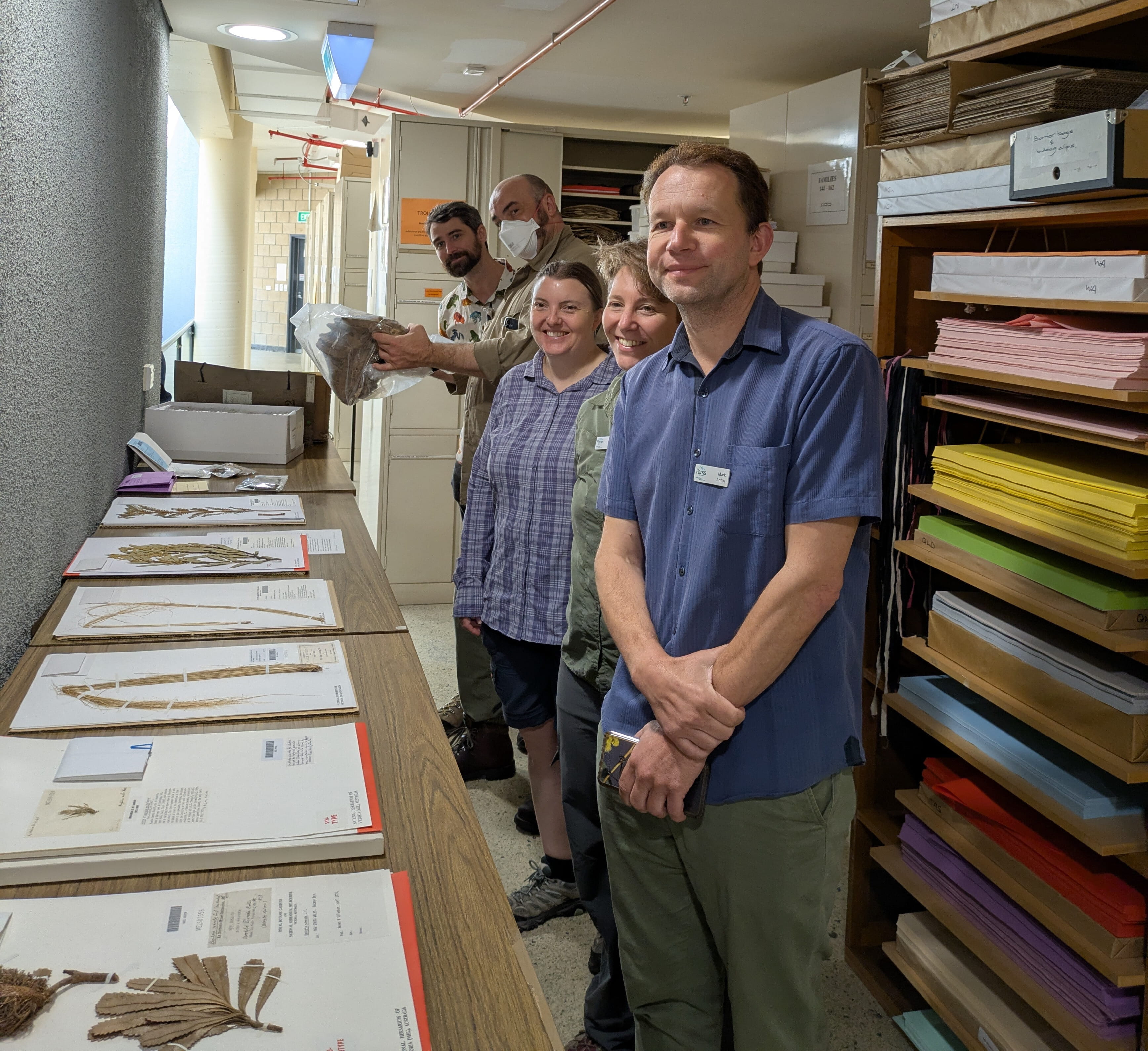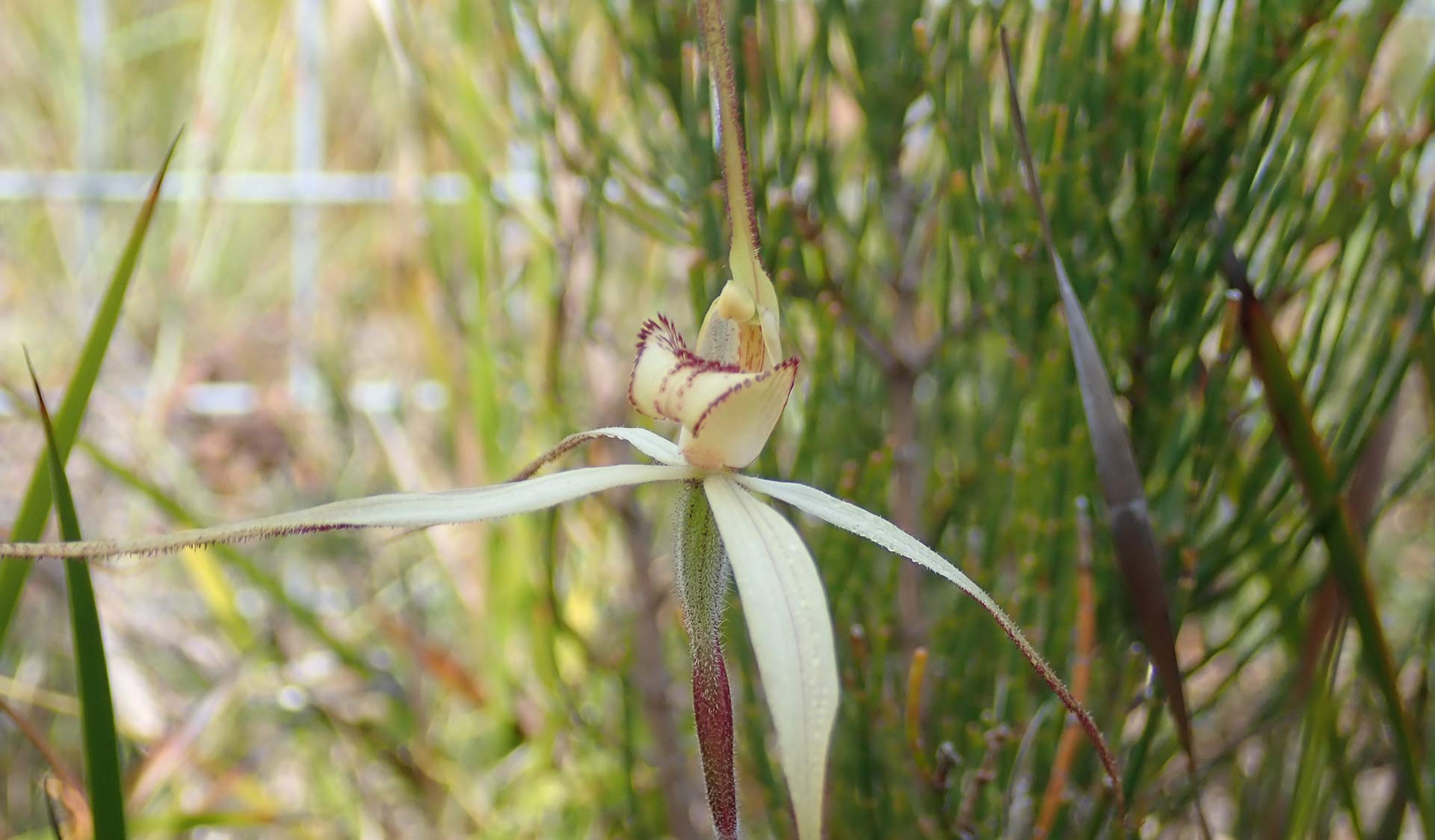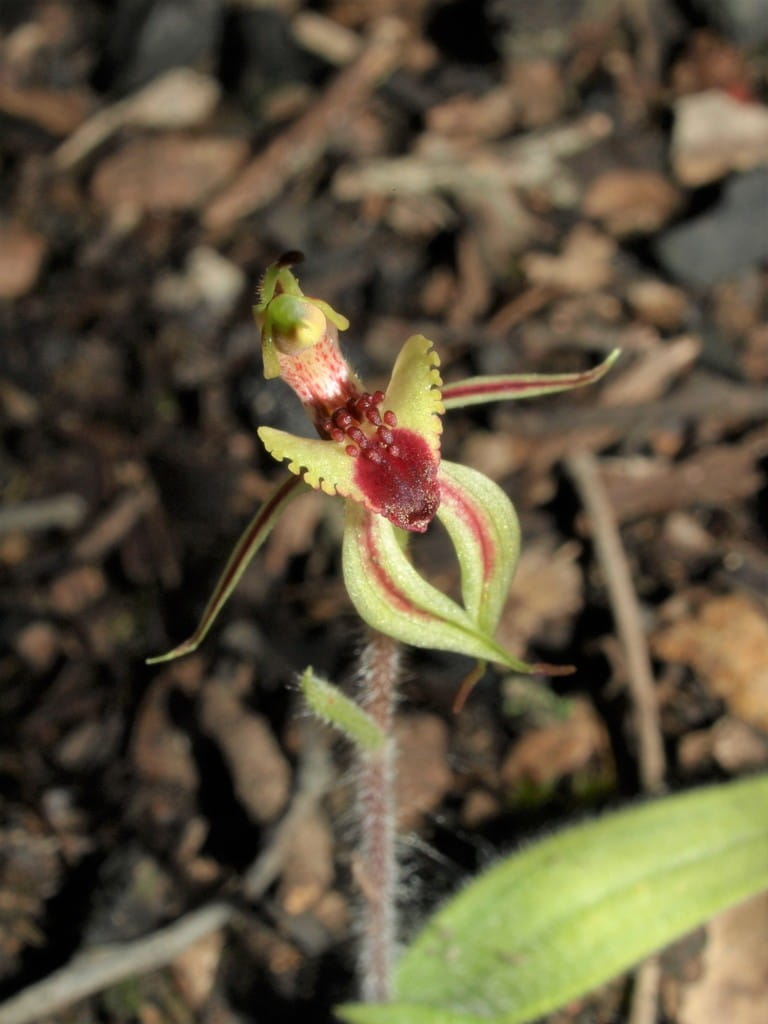Strengthening our partnership with the Royal Botanic Gardens
Thursday 14 August, 2025
Parks Victoria’s Science and Knowledge team had onsite meetings with key conservation staff of the Royal Botanic Gardens (RBG) in Melbourne and Cranbourne earlier this year.
The team were treated to a behind-the-scenes tour of the herbarium and conservation programs. These were key meetings as staff working in the herbarium and conservation programs are often undertaking research and critical conservation works on Parks Victoria-managed land.
This can include:
- cataloguing biodiversity through herbarium collections
- establishing ex-situ collections and seedbanks
- studying plant ecology, like pollinator and symbiont relationships, and
- monitoring disaster response and recovery of threatened species
Additionally, we’ve been able to create more functional Access Agreement that will provide further cohesion and collaboration to our partnership.

Our Science and Knowledge team in the Royal Botanic Gardens' Herbarium. Credit: Parks Victoria
What is an Access Agreement?
A Research Activity Access Agreement is needed for any organisation or individual planning to conduct research on Parks Victoria managed land.
This agreement exempts researchers from certain park rules that would otherwise prevent them from conducting the research in a park or waterway. It also ensures that risks to park values, safety and park management operations that may arise from research activities are managed.
Our strengthened agreement with the Royal Botanic Gardens provides stronger guidance around permissible activities and collection limits, specifying that there needs to be close collaboration and transparency with our Science and Knowledge team.
“Ultimately, the new Access Agreement seeks to open communication channels about proposed activities, so that local teams are better supported,” says Dr Floret Meredith, our Environmental Scientist – Flora.
"The types of activities and risks associated with these are detailed in Annexure A of the permit."
In coming weeks, the RBG is planning to submit several Planned Activities under AA-0002212; primarily centred around pollinator and soil mycorrhizal symbiont studies to support translocation or reintroduction of rare and threatened species. Many of these rare and threatened species are orchids!

Close up of the Eastern Spider Orchid (Caladenia orientalis)
Credit: Parks Victoria

Close up of the Charming Spider Orchid (Caladenia amoena)
Credit: Michael Keogh via iNaturalist
Floret’s Flora Fun Facts
The RBG have a focus around pollination and symbiotic relationships in threatened species, including orchids. Dr Floret Meredith has shared some of her favourite fun facts about these beautiful and fascinating plants with us below:
- Many orchids require mycorrhizal symbionts in order to germinate and persist in their environments. Some orchids require one species of symbiont while germinating, but a different one once established.
- Some symbiont-plant interfaces, especially in the pea family, can have a smell reminiscent of fluffies (as we call them in my house). It's like plant probiotics! Some orchid species have a specialised organ called a collar where the bulk of mycorrhizal exchange takes place. Check out chapter 12 in Plant Germplasm Conservation in Australia - 3rd edition for more info.
- Many orchids also require specific pollinators that they lure with sexual deception, secreting pheromones and looking an awful lot like a female to lure males. Insects commonly targeted include wasps, bees, and flies. Other orchids actually offer nectar rewards – check out this clip from the RBG on the Frankston Spider Orchid (Caladenia robinsonii) to see a feeding frenzy.
These types of fun facts are more than trivia – they're critical to support efforts to help threatened species survive and thrive in the wild. We’re excited to be taking a leaf our of our plant’s books and strengthening our symbiotic relationship with our partner scientists!

